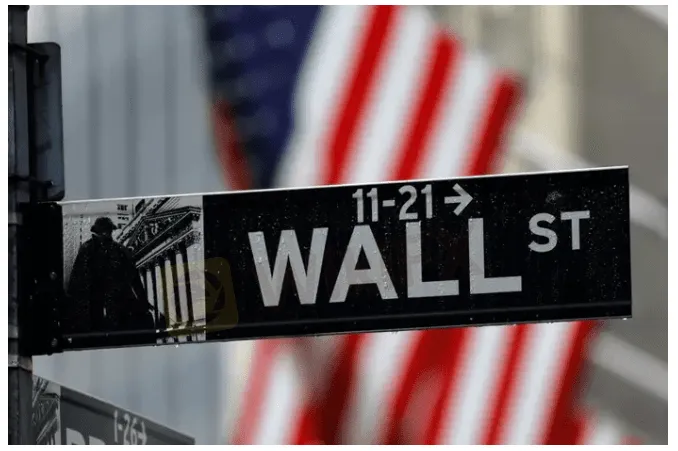简体中文
繁體中文
English
Pусский
日本語
ภาษาไทย
Tiếng Việt
Bahasa Indonesia
Español
हिन्दी
Filippiiniläinen
Français
Deutsch
Português
Türkçe
한국어
العربية
Marketmind: Somethings off
Abstract:It‘s the final day of trading of April and it does look like despite the fireworks on Wall Street last night, this month bears sombre omens for what’s to come, notably with Asian shares on the verge of their worst month since the COVID-19 March 2020 crash.

A look at the day ahead in markets from Julien Ponthus.
Its even worse for the Nasdaq which is on course for its biggest losses in a month since the financial crisis of 2008.
For all the enthusiasm surrounding the earnings of Meta Platforms, Amazon.com delivered a disappointing quarter while Apple had dire news to share with the market after the bell, despite record profits and sales.
COVID-19 lockdowns snarl production and demand in China and the iPhone maker warned that the war in Ukraine, which led Apple to stop sales in Russia, would cut sales more deeply in the fiscal third quarter.
Overall, the S&P 500 has had a terrible ride so far in 2022, losing roughly 10% of its value, wiping off four trillion dollars in market capitalisation.
And it‘s hard to ignore the dotcom bubble flavoured ’irrational exuberance‘ whiff that surrounds Elon Musk’s $44 billion cash deal for Twitter, particularly when the social media reported revenue and ad sales that fell short of expectations.
Theres also been plenty of puzzling market moves lately. The dollar enjoyed its best month in a decade and hit its highest level in 20 years but data showed the U.S. economy unexpectedly contracted in the first quarter.
Of course, with investors betting on a 50 basis point interest rate hike at the Federal Reserves meeting next week, a U.S. aggressive monetary tightening remains the driving force across financial markets for the foreseeable future.
In that light, it is not surprising that a warning from Japans Ministry of Finance failed to deter the dollar from cruising above 130 yen for the first time since 2002.
Perhaps not surprising either that the euro, weakened by the Russian gas standoff, also felt the might of the greenback and fell to a five-year low of $1.04 even as 10-year German bund yields rose 10 basis points with German inflation hitting its highest level in more than 40 years.
Key developments that should provide more direction to markets on Friday:
-French economic growth stalls in first quarter, misses forecasts
-BASF confirms earnings guidance but flags risks
-Danske Bank Q1 net profit below expectations
-Swiss National Banks annual general meeting of shareholders
-China to step up policy support to steady economy

Disclaimer:
The views in this article only represent the author's personal views, and do not constitute investment advice on this platform. This platform does not guarantee the accuracy, completeness and timeliness of the information in the article, and will not be liable for any loss caused by the use of or reliance on the information in the article.
Read more

INFINOX Partners with Acelerador Racing for Porsche Cup Brazil 2025
INFINOX has teamed up with Acelerador Racing, sponsoring an Acelerador Racing car in the Porsche Cup Brazil 2025. This partnership shows INFINOX’s strong support for motorsports, adding to its current sponsorship of the BWT Alpine F1 Team.

The Daily Habits of a Profitable Trader
Every professional trader follows a structured approach to ensure they are well-prepared, disciplined, and able to seize opportunities with confidence. Whether you are a seasoned investor or an aspiring trader, adhering to a robust daily checklist can significantly enhance your performance. Use this checklist to check if you are a qualified trader

The Impact of Interest Rate Decisions on the Forex Market
Interest rate changes determine currency attractiveness, influencing capital flows and exchange rate trends. Understanding this mechanism helps investors navigate the forex market effectively.

How a Housewife Lost RM288,235 in a Facebook Investment Scam
A 47-year-old housewife in Malaysia recently fell victim to an online investment scam, losing a substantial sum of RM288,235 after engaging with a fraudulent scheme advertised on Facebook.
WikiFX Broker
Latest News
TradingView Brings Live Market Charts to Telegram Users with New Mini App
Trump tariffs: How will India navigate a world on the brink of a trade war?
Interactive Brokers Launches Forecast Contracts in Canada for Market Predictions
Authorities Alert: MAS Impersonation Scam Hits Singapore
Stocks fall again as Trump tariff jitters continue
INFINOX Partners with Acelerador Racing for Porsche Cup Brazil 2025
Regulatory Failures Lead to $150,000 Fine for Thurston Springer
April Forex Trends: EUR/USD, GBP/USD, USD/JPY, AUD/USD, USD/CAD Insights
March Oil Production Declines: How Is the Market Reacting?
Georgia Man Charged in Danbury Kidnapping and Crypto Extortion Plot
Currency Calculator







